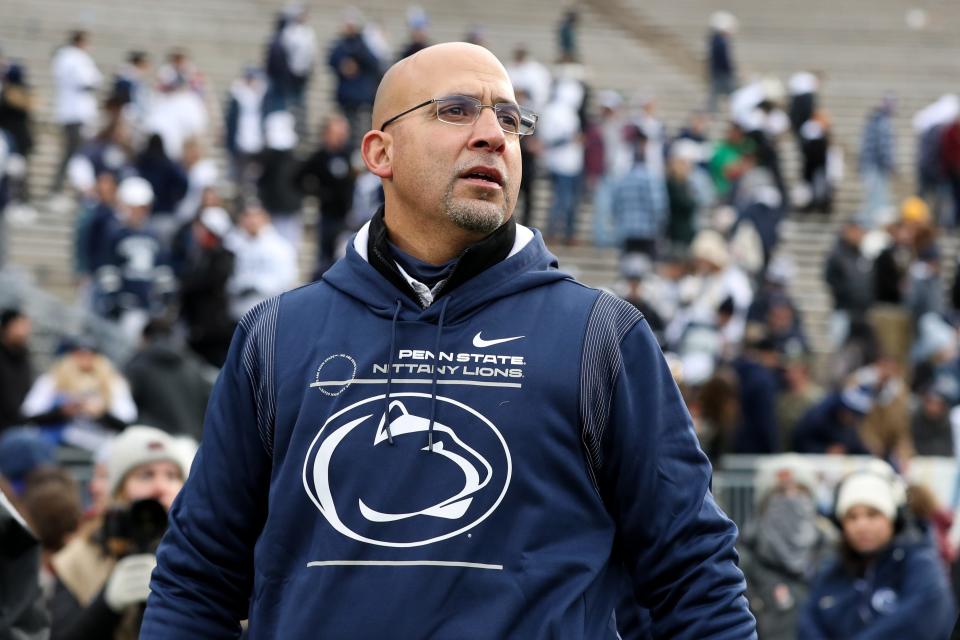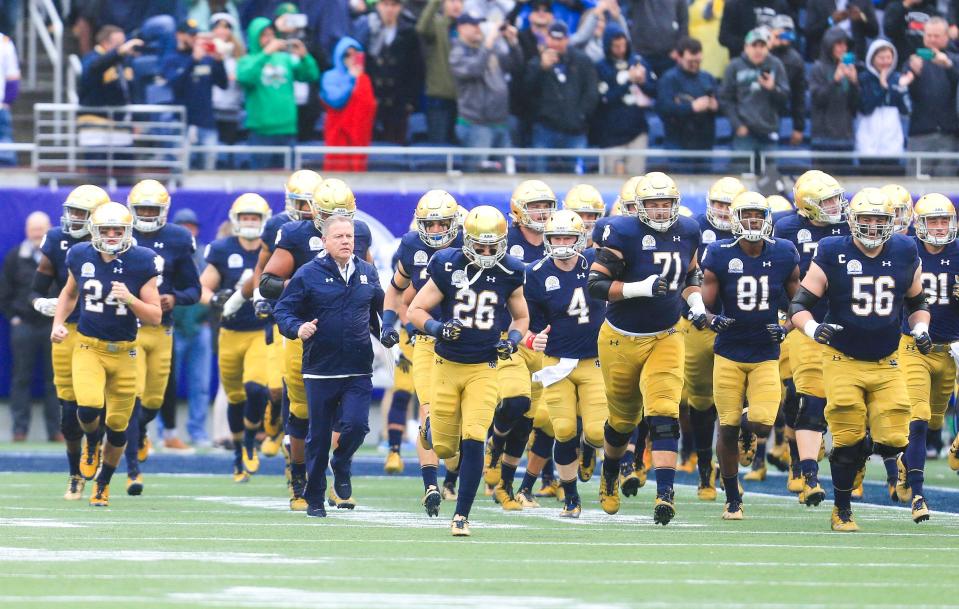Breaking down crazy numbers from new college football coaching contracts: Brian Kelly, Mel Tucker, James Franklin and Jimbo Fisher
Even by the up-always-up standards of college football coaches’ compensation, the past week has redefined the top end of the pay scale in ways that seemed pretty hard to imagine even this past summer.
But then Texas A&M announced it had agreed to a 10-year, $95 million contract with Jimbo Fisher. And an elite-level job opened at Southern California. And another at LSU. And another at Florida. Whether playing defense to keep a coach or going on offense to hire one from another school, university officials and governing boards have agreed to deals with so many years and so many guaranteed dollars that unstable jobs have now become almost tenured positions.
USA TODAY Sports has been tracking college football coaches’ compensation since 2006 and athletics department finances, dating from the 2004-05 school year. Here’s some context on recent agreements totaling roughly $375 million, not including incentives, for Fisher, LSU’s Brian Kelly, Michigan State’s Mel Tucker and Penn State’s James Franklin. Except as noted, this does not include the deal between USC and Lincoln Riley, which is reasonably presumed to be at least comparable to those four, but is not subject to disclosure because USC is a private school.
BONUS BUCKS: Breaking down Brian Kelly's contract at LSU
ANALYSIS: Four reasons college football coaches salaries have gone crazy
The buyouts

In 2017, USA TODAY Sports began annually reporting on the amounts that would be owed to football head coaches if they were fired without cause on Dec. 1 of that year (roughly the end of the football season). In 2017, the average amount that would have been owed to the coaches with the four largest buyouts was $34.2 million. As of January 2022, the average of the four largest buyouts that so far have been made public – those for Fisher, Kelly, Tucker and Franklin -- will be $89 million.
The big picture

At present, the basic 2022 season compensation for the top-paid public-school coaches is set to be $9.9 million for Alabama’s Nick Saban, $9.5 million apiece for Tucker and Kelly, $9 million for Fisher and $8.5 million apiece for Franklin and Clemson’s Dabo Swinney.
That’s a total of $54.9 million for six coaches.
During the 2019-20 school year, the most recent one for which figures are available, Colorado State reported spending $54.994 million on its entire athletics program, according to financial reports to the NCAA compiled in partnership with Syracuse University’s S.I. Newhouse School of Public Communications.
Colorado State’s expenditure was the 63rd-largest among Division I public schools. Put another way, more than 165 schools spent less on their athletics programs in 2019-20 than six schools will be spending – at minimum – on their football head coaches.
The conference level
This season, the Mid-American Conference’s 12 schools, excluding pay reductions related to the pandemic, were set to pay a combined $7.84 million in basic annual compensation to their football head coaches. The Sun Belt Conference’s 10 schools were set to pay a combined $8.61 million.
Take your pick, 10 or 12, basically for the price of one.
MORE MONEY: See college football coaches salaries and who gets paid what
MORE: Michigan No. 2 in latest College Football Playoff rankings
WINNERS, LOSERS: Six teams vying for four CFP slots. Only No. 1 Georgia is safe
The 10-year contract
At present, based on documents and information from schools, there are at least seven coaches working under 10-year contracts. In addition to the four recent deals, Swinney, Iowa’s Kirk Ferentz and Northwestern’s Pat Fitzgerald have such arrangements.
Not counting those seven, there have been eight 10-year deals in play at some point since 2010 – and three of those were earlier iterations of deals with Fisher, Ferentz and Fitzgerald. The others that USA TODAY has been able to identify: Central Florida’s George O’Leary (began in 2006), Oregon State’s Mike Riley (2010), Iowa State’s Paul Rhoads (2012), Baylor’s Art Briles (2013) and Florida Atlantic’s Lane Kiffin (2018).
The history*
*(mostly adjusted for inflation)

In 2006 dollars, there was one coach making more than $3 million that year – Oklahoma’s Bob Stoops at $3.45 million. Adjusted for inflation, that’s just over $4.7 million – or, less than half of what three coaches will be making in 2022.
The top six most highly paid public-school coaches in 2006 were making an average of $2.54 million – $3.49 million, adjusted for inflation. The top six in 2022 are set to make an average of $9.15 million.
And Brian Kelly? Back in 2006, he made $185,000 for coaching Central Michigan. That’s $254,000 adjusted for inflation, roughly what he will make for a week-and-a-half’s work at LSU.
Follow colleges reporter Steve Berkowitz on Twitter @ByBerkowitz
This article originally appeared on USA TODAY: College football: Brian Kelly and three other coaches could earn $375M

